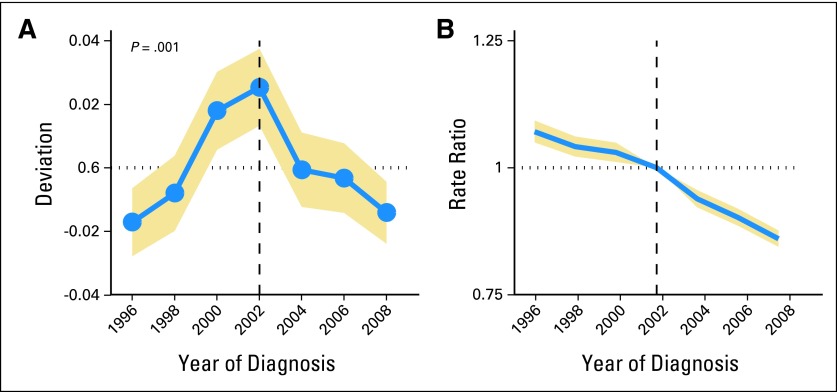Fig 2.
Age-period-cohort effects among US women age ≥ 50 years (North American Association of Central Cancer Registries Incidence, 1995 to 2008). Point estimates are shown in blue, with 95% CIs shaded in gold. (A) The significance of period deviations was assessed by contrasting the three time periods before the Women's Health Initiative (WHI; 1995 to 1996, 1997 to 1998, and 1999 to 2000) with the three time periods after WHI (2003 to 2004, 2005 to 2006, and 2007 to 2008). P value is for change in the slopes of the period deviations, adjusted for age and cohort effects. (B) Period relative risks were calculated as rate ratios adjusted for age and birth cohort effects, comparing the ovarian cancer incidence rates for a given time period with the rate of a referent period (the 2002 time period in this analysis). The period relative risks declined from more than 1.0 before the 2002 referent period, after which the period relative risks were significantly less than 1.0.

